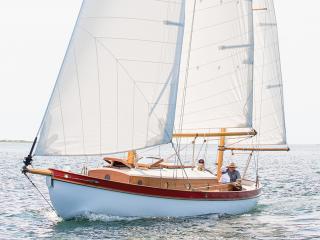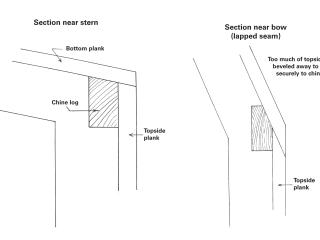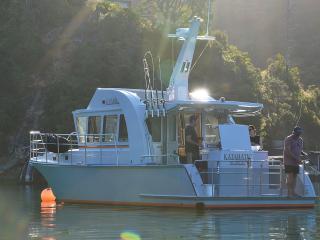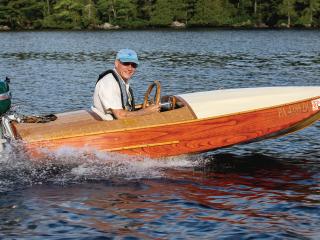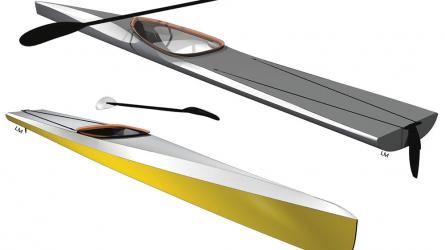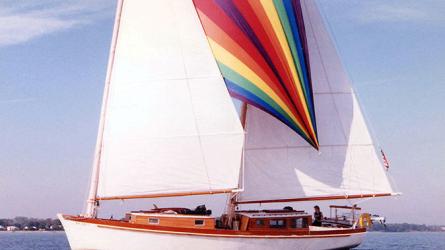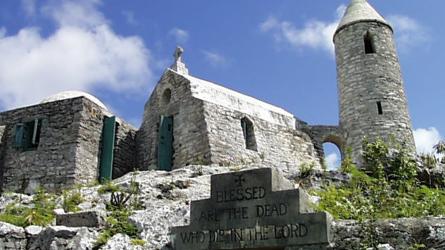September / October 2020
“The Little Engine That Could”
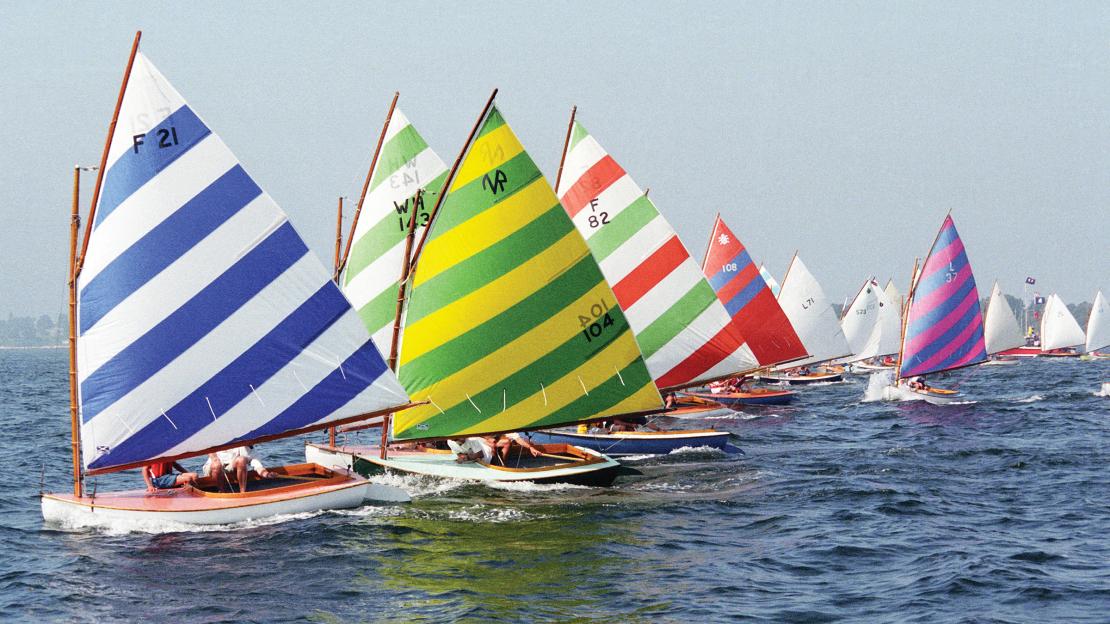
All the color of a Beetle Cat fleet is evident here during the start of day-two of racing at Padanaram, Massachusetts, celebrating the class’s 75th anniversary in 1996.
Like a down-turned thumb, the Massachusetts peninsula known as Clarks Point projects south from New Bedford into Buzzards Bay. On the point’s western side, bordering Clarks Cove, British forces came ashore in September 1778 and burned what was then known as Bedford Village. Hard times followed. But by 1787, when the village was renamed New Bedford, Clarks Point was home to salt works, woods, farms, and in 1797, the first of several lighthouses. By then it was clear that whaling would power the growth of what became, for a time, the country’s richest city.
The whaling fleet created a market for all sorts of equipment and supplies: barrels, blocks, pumps, sails, tools, rope, spars, and of course whaleboats. Among the sparmakers were William Beetle (1787–1872)—a New Bedford street still bears the family name—and his son Rodolphus, one of the city’s wealthy men. Another Beetle, James (1812–86), established a boatshop and developed a method for the rapid, volume production of whaleboats.
Sometime after 1877, James moved the shop from downtown Eddy’s Wharf to Clarks Point, where he and his wife, Ann Amelia Hathaway, had a little house on what is now East Rodney French Boulevard. Here, James worked with his sons John Henry, Charles Darwin, and James C. Beetle.
To read the rest of this article:
Click the button below to log into your Digital Issue Access account.
No digital access? Subscribe or upgrade to a WoodenBoat Digital Subscription and finish reading this article as well as every article we have published for the past 50-years.
ACCESS TO EXPERIENCE
2-for-1 Print & Digital Subscription Offer
For this holiday season, WoodenBoat is offering our best buy one, get one deal ever. Subscribe with a print & digital subscription for $42.95, and we’ll give you a FREE GIFT SUBSCRIPTION to share with someone special.
1 YEAR SUBSCRIPTION (6 ISSUES)
PLUS ACCESS TO MORE THAN 300 DIGITAL BACK ISSUES
PRINT+DIGITAL $42.95
Subscribe
To read articles from previous issues, you can purchase the issue at The WoodenBoat Store link below.
 Purchase this issue from
Purchase this issue from
